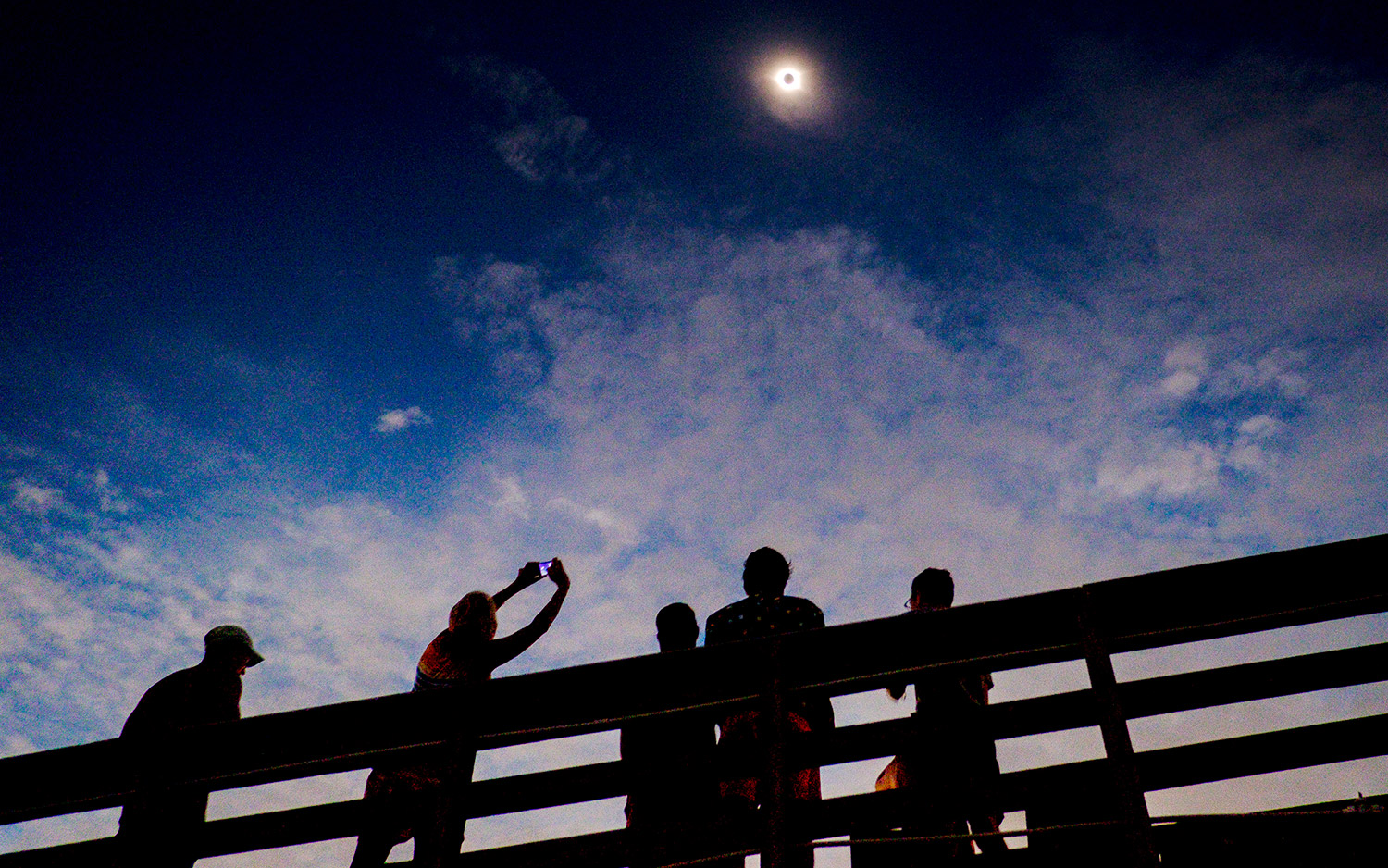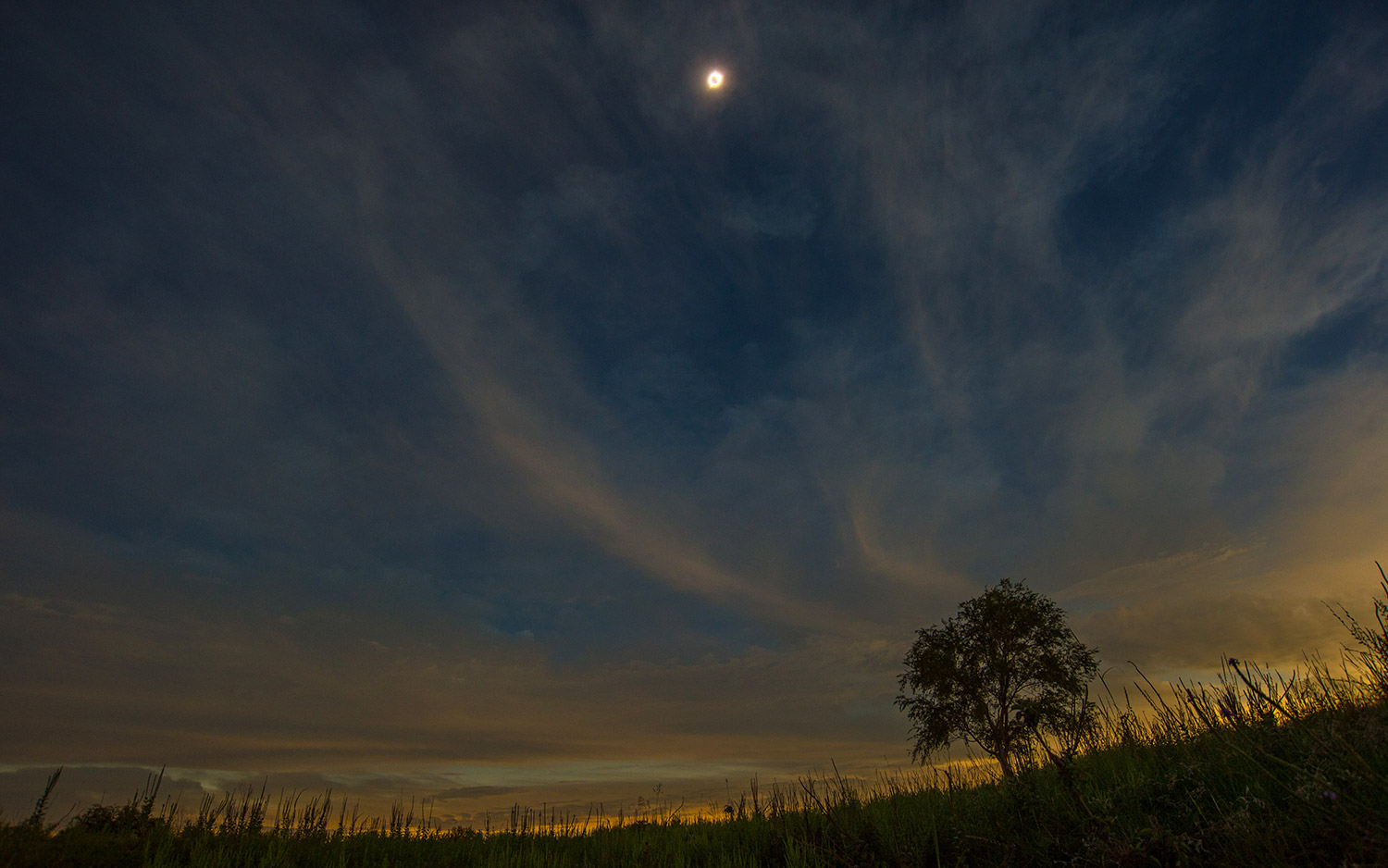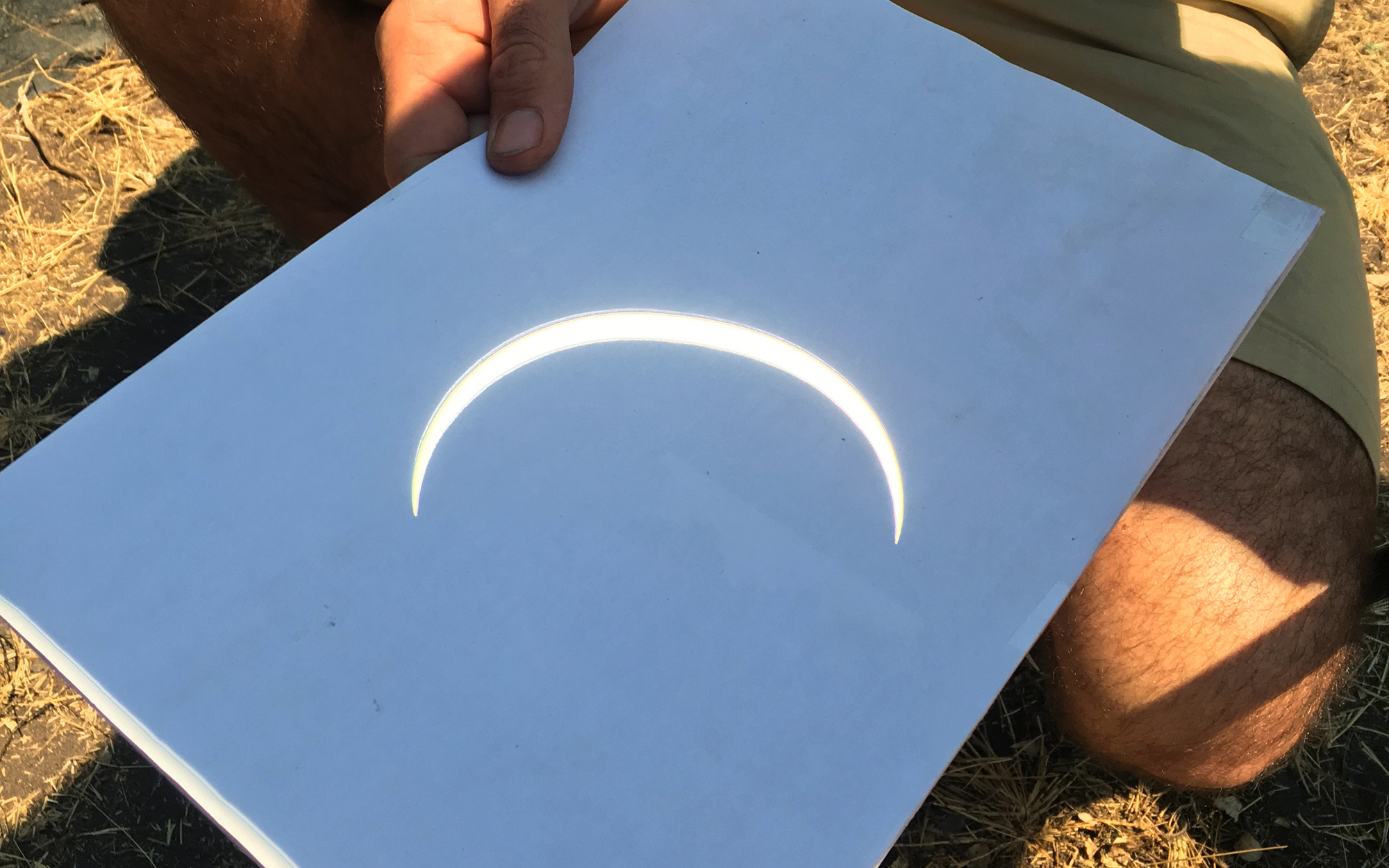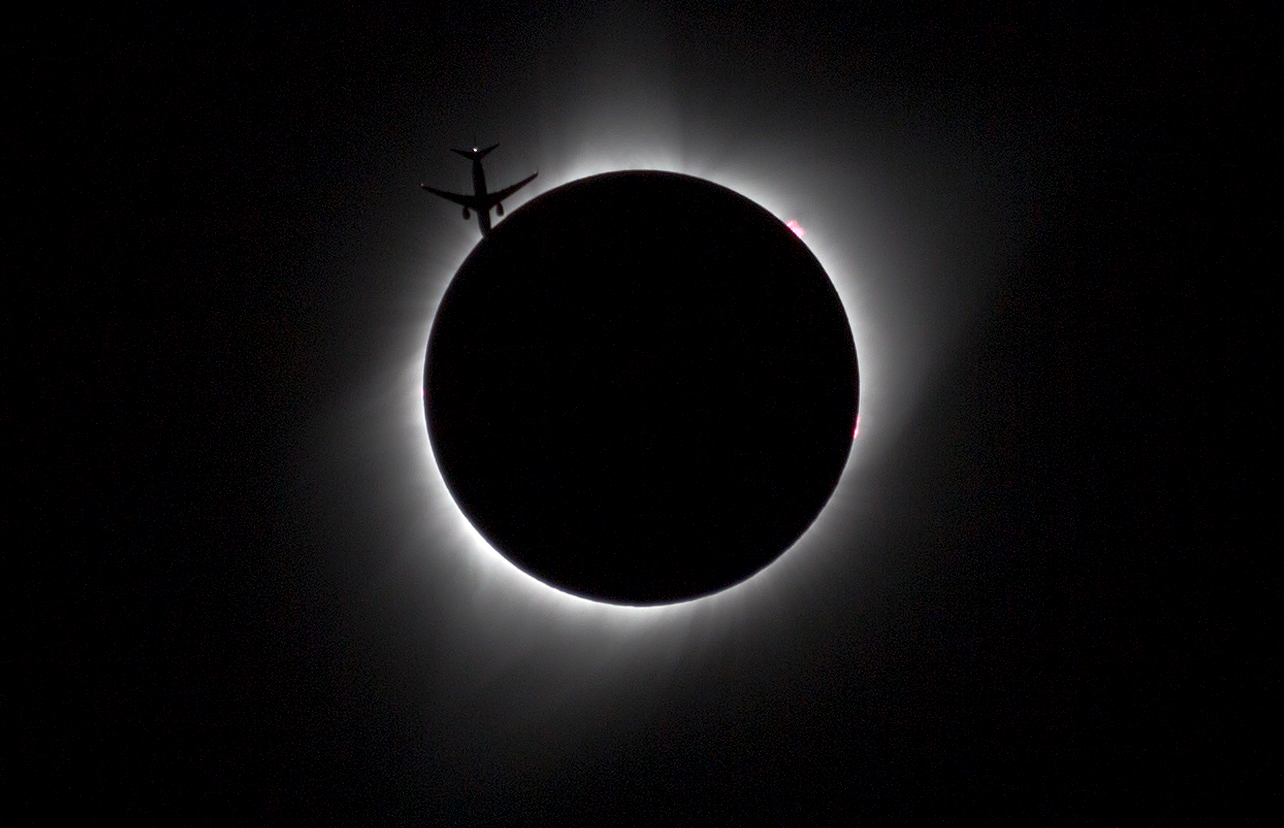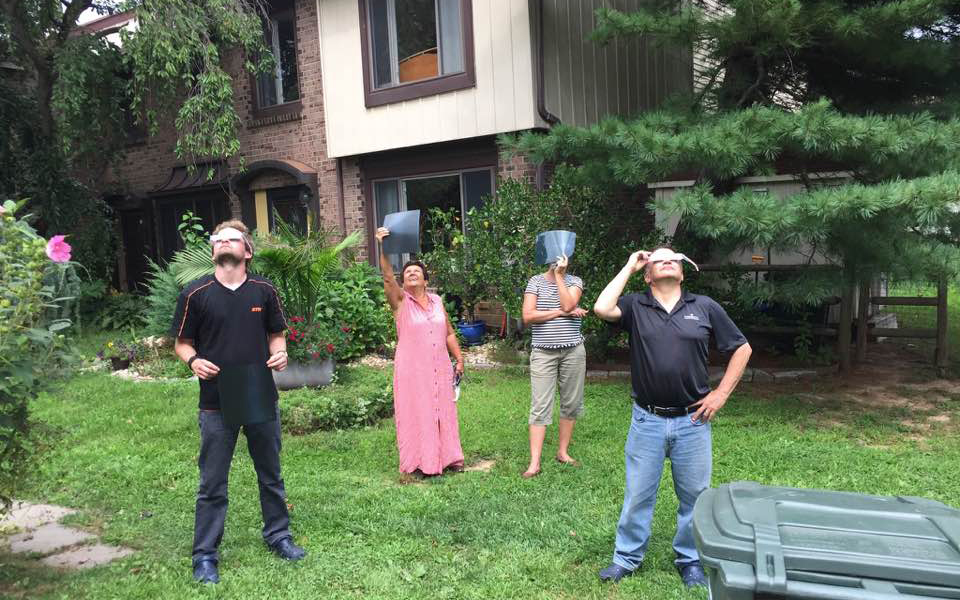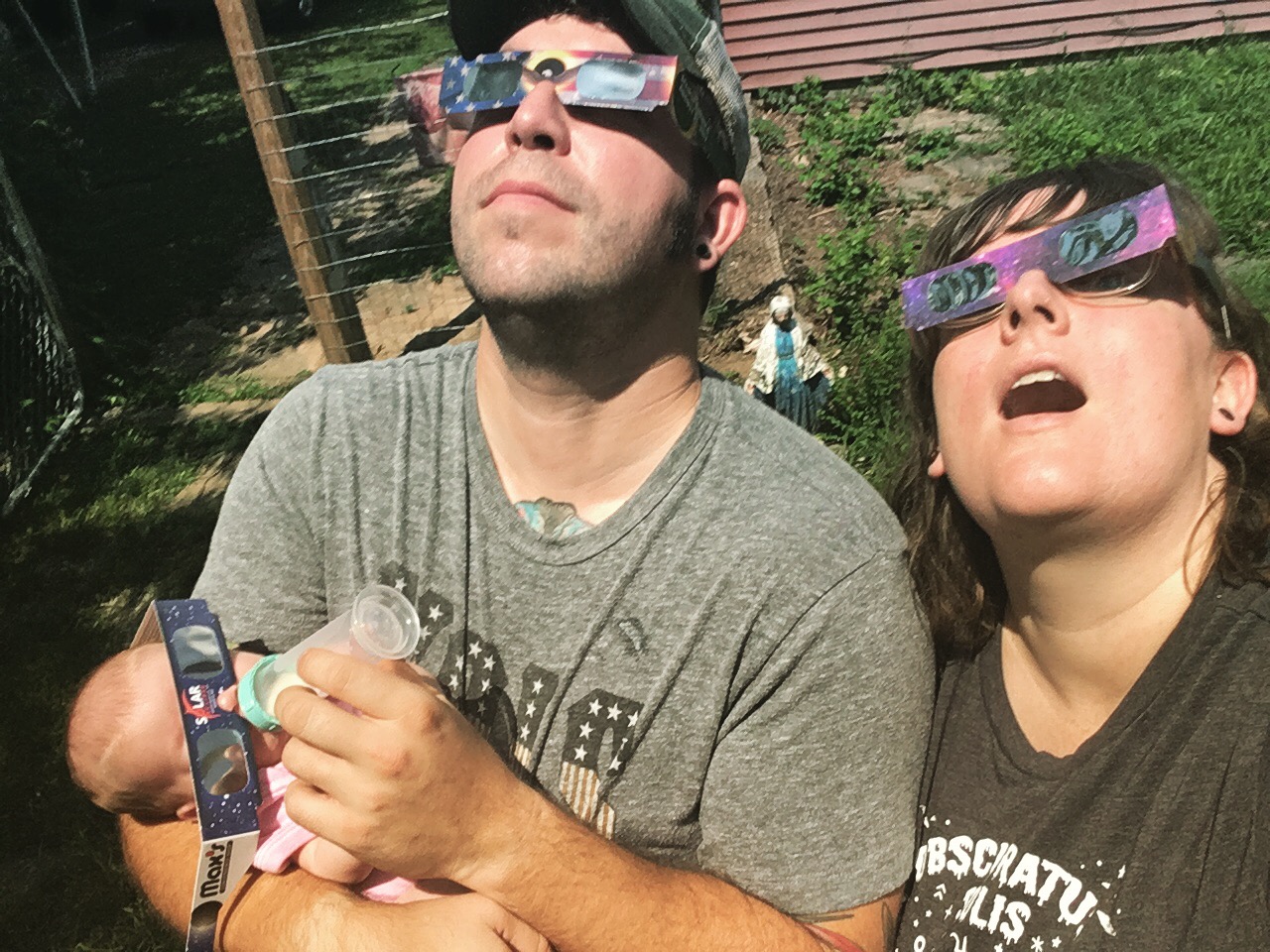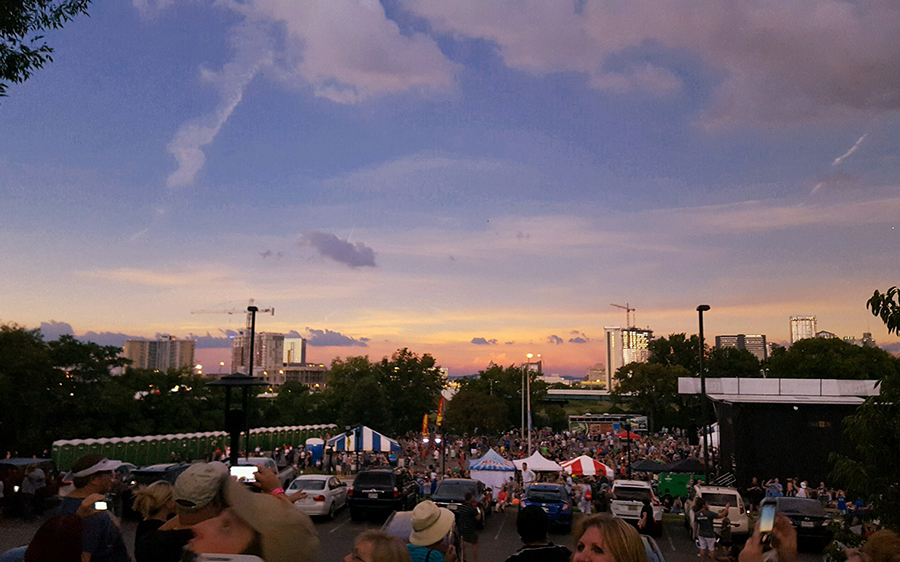Great American Solar Eclipse of 2017: Your Amazing Memories
Throwback to the Great American Total Solar Eclipse
Where were you on Aug. 21, 2017? On this day last summer, millions of Americans flocked to a 70-mile-wide (113 kilometers) path that stretched across the U.S. from Oregon to South Carolina to watch as the moon's shadow momentarily turned day into night. Outside the path of totality in most of the rest of the country, skywatchers looked (using proper eye protection, course) as the moon took a "bite" out of the sun's disk. The "Great American Solar Eclipse" was a once-in-a-lifetime experience for many people across the country, and "eclipse chasers" who traveled to the U.S. just to see up to 2 minutes and 40 seconds of darkness during the day. [Here Are the Most Amazing Photos and Videos of the 2017 Solar Eclipse]
Space.com asked readers to share their stories about the event. From cloud-fleeing road trips to spaghetti-colander experiments and picture-perfect moments of totality, here are their stories.
Fleeing clouds, chasing totality
Robert Guajardo woke up on Aug. 21 in Omaha, Nebraska, where the weather forecast predicted "clouds and rain in all directions," he told Space.com in an email. To escape the clouds, he and a friend hit the interstate, driving with no particular destination in mind — anywhere without clouds would do. "Rest areas after rest areas along the highway were filled with tripods, cameras and people eager to get a glimpse of this eclipse," he said. Eventually, the pair stopped in Grand Island, Nebraska — about 150 miles (240 km) west of Omaha — where "the clouds were thin enough that we didn't have to look any further."
"Greg and I, along with hundreds of other people, stood there in the Walmart parking lot wearing our eclipse glasses," Guajardo said. "The temperature dropped maybe a good 10 to 15 degrees [Fahrenheit, or 5 to 8 degrees Celsius]. A calm wind began to blow. A purple haze started forming over the horizon like none I'd ever seen … then it happened. The sun was gone, and everyone started screaming!"
"To my dismay, I could no longer see anything through the eclipse glasses. It was then that I decided to go against my better judgement and take the eclipse glasses off. Nothing could have prepared me for what I was about to see next. Imagine for a moment the sun as you know it being no more. No more yellow light. No more heat. No more squinting! Instead, a beautiful ring of blue light sparkling like a diamond."
"For just a brief couple of minutes, the Earth stood still."
A 360-degree sunset
For one eclipse-chasing couple, a hike through spider-infested woods in the blistering summer heat proved worthwhile when they got to see totality from a gorgeous, secluded nook of a park in southwest Kentucky known as the Land Between the Lakes. "I bought a trail guide booklet and convinced my wife we should hike into this area," Steve Davis told Space.com in an email. "We both thought it was a marvelous experience."
The couple traveled from Elmwood, Illinois, to see about 2 minutes and 16 seconds of totality. They originally planned to watch the eclipse from Fort Donelson National Battlefield about 30 miles (48 km) south, just across the Tennessee border, but instead decided to head north, where totality would last about a minute longer. "We did not try to capture photo of actual eclipse. We are not photographers. We took a couple of photos of the dusk that surrounded us," Davis said. You can read more about the couple's eclipse adventure in Davis' blog post at dailykos.com.
Totality trumped these clouds
"The predictions were for bad weather," Ramesh Kapoor, a retired professor at the Indian Institute of Astrophysics in Bangalore, told Space.com in an email. Kapoor traveled to the University of South Carolina in Columbia to watch the eclipse from the Melton Observatory. It would be his seventh total solar eclipse — if the clouds were going to cooperate. "There were clouds keeping the sky nearly filled rather mercilessly since the evening of the 17th," Kapoor said. "The weather forecasts for the 21st were no less than predictions of a doomsday."
Observers patiently waited for a break in the clouds, and as totality grew closer, "the worried look on their faces said it all," Kapoor said. For a moment, he began to regret not going to a "better place" with clearer skies. Then something remarkable happened. "As the eclipse progressed, the clouds – the enemies at the gate — began to gradually retreat," Kapoor said. "We heard an uproar in the distance while [totality] still lay moments ahead. People got in action, the cameras clicked and the whole campus wowed and cheered the eclipse with a thunderous applause."
What seems like an eclipse miracle actually has a scientific explanation. According to meteorologist and Space.com skywatching columnist Joe Rao, totality can break up convective clouds — which form when warm air rises — by creating a pocket of cold air in the moon's shadow. "We got a great totality moment, a thin cloud cover notwithstanding," Rapoor said.
Playing with shadows
In Hanceville, Alabama, where the sun was about 95 percent covered by the moon, Marcia Pender enjoyed the cool shadows the partially eclipsed sun cast on the ground.
"We made pinhole cameras, and while they were OK, my favorite (other than watching with the solar glasses) was the cool pattern of all the tiny eclipses made using a colander," Pender told Space.com in an email. "I've always read about the shadows cast by leaves, but seeing it live was better than I anticipated." [Things I Used to Observe an Eclipse, Rated]
Experiment with an eclipse projector
Just outside of Albany, Oregon, Mike Faust built a homemade eclipse projector with binoculars to see the crescent-shaped shadows during the partial phases of the eclipse. "I was using a technique with binoculars to project an image on a white board," Faust told Space.com. "I saw this technique on your website."
"It worked pretty good, except the wind knocked over the front cardboard shield during the totality phase, and I could not see if the totality image would have been projected on the white board. It was kind of spooky, like a big dimmer switch. I was hoping to see a shadow approaching, but I did not. It was very cool."
An airplane photobombs the eclipse
"This pic was actually taken by accident," Josh Spradling told Space.com in an email. He captured the image near Glendo, Wyoming. "I remember pulling the camera away to watch this nearby airplane fly between me and the moon as thousands of people cheered and thinking that would have made a great shot, but I didn't want to miss any more of the short, 2.5-minute eclipse than I had to."
"Apparently, my finger kept snapping away and to my surprise ... I discovered this image on my camera two days later. This plane flew over Glendo, Wyoming, at exactly 11:46 a.m. on Monday." Spradling later identified the aircraft as WestJet flight 1582 from Calgary to Dallas.
Breaking space news, the latest updates on rocket launches, skywatching events and more!
A partial eclipse party in Pennsylvania
"Our plan was to have lunch outside with my husband and a visiting cousin," said Maud Russ, who watched the eclipse from Southampton, Pennsylvania — about 25 miles (40 km) south of Philadelphia. "It was a cloudy day. While waiting for the eclipse to start in our area, we watched on the iPad what the rest of the country was experiencing. Suddenly, several neighbors showed up with their glasses and old X-ray photos. It became quite a party."
(WARNING: NASA advises against using X-ray images as solar filters. To best protect your eyes, you should use only ISO-approved glasses and filters.)
Totality was not visible from Southampton, but skywatchers there were able to see the moon block about 75 percent of the sun's disk for a spectacular partial eclipse. "Although we did not have the total darkness here, it was still an amazing experience," Russ said.
Baby's first eclipse
In Nashville, Tennessee, Travis Cole and Rae Hartsock brought their infant to an eclipse-viewing party at a friend's house. None of the three friends had ever seen a solar eclipse before, and they had no idea what was in store for them that afternoon. "I thought it wouldn't be that cool, but it was awesome!" Hartsock told Space.com.
During totality, Cole said he was amazed at the shadow bands "dancing" on the ground. Besides the spectacular views, he was also struck by how the eclipse brought people together. "It was amazing how unifying the whole eclipse experience was," he said. Their baby, however, seemed unimpressed by the whole experience. "She totally slept through the entire thing," Hartsock said.
One cloud
I also went to Nashville to see the total solar eclipse from the biggest city along the line of totality. While the occasional cloud passed overhead, the weather seemed cooperative, and we were optimistic that the clouds would pass. About a minute before totality, a cloud looked like it was making its way toward the sun. "Oh, that cloud will break up in time," I said. "Don't worry. The cloud isn't that big. It will pass," I said. I was wrong. The cloud blocked the sun for about as long as the moon did, which was about 1 minute and 56 seconds.
As disappointing as that one cloud was, totality was still an amazing experience. After I'd been sweating profusely all day long in the unbearable Tennessee heat, a cold wind rolled in and sent shivers down my spine. I'm pretty sure I had goose bumps on my skin, but I was too busy looking around to see what was happening to my own body. A stunning 360-degree sunset turned the sky purple all around. Planets that aren't usually visible in the daytime, like Venus and Jupiter, made a brief appearance. Birds rushed back to their nests, while screeching cicadas loudly sang the song of their kind, something they typically do only at dusk. Everything was super weird, and before I knew it, it was over.
Of course, it would have been nice to see totality without that cloud in the way. But the cloud actually did me one small favor: It forced me to look around instead of up during totality, allowing me to focus on how humans and animals down here on Earth reacted to this incredible thing happening in the sky. I have no regrets — only a yearning to see the next total eclipse from the driest place possible, so as to avoid the clouds at all cost! [You can read my entire travelogue here: Solar Eclipse 2017 in Nashville: The Moon's Shadow in Music City]

Hanneke Weitering is a multimedia journalist in the Pacific Northwest reporting on the future of aviation at FutureFlight.aero and Aviation International News and was previously the Editor for Spaceflight and Astronomy news here at Space.com. As an editor with over 10 years of experience in science journalism she has previously written for Scholastic Classroom Magazines, MedPage Today and The Joint Institute for Computational Sciences at Oak Ridge National Laboratory. After studying physics at the University of Tennessee in her hometown of Knoxville, she earned her graduate degree in Science, Health and Environmental Reporting (SHERP) from New York University. Hanneke joined the Space.com team in 2016 as a staff writer and producer, covering topics including spaceflight and astronomy. She currently lives in Seattle, home of the Space Needle, with her cat and two snakes. In her spare time, Hanneke enjoys exploring the Rocky Mountains, basking in nature and looking for dark skies to gaze at the cosmos.
